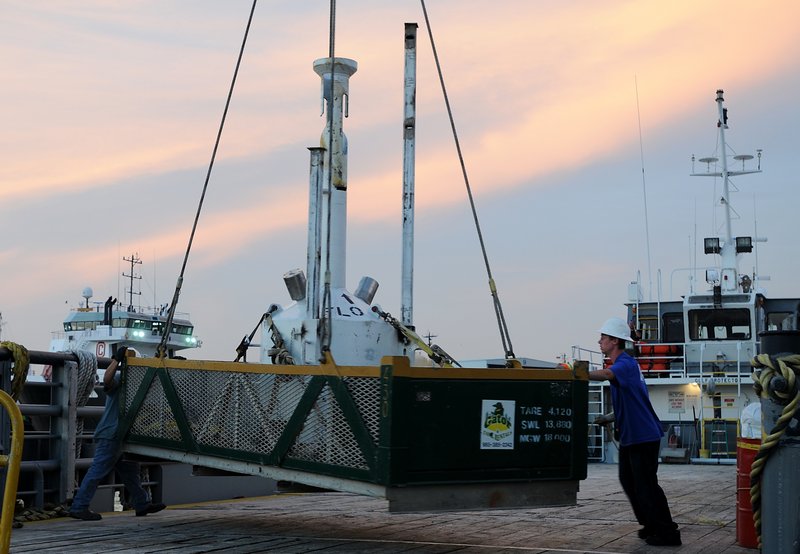MIAMI – BP engineers will put to the test as early as today an experimental plan to capture crude oil gushing from a ruptured well a mile below the surface of the Gulf of Mexico — either in the form of a “top hat” containment dome or a pipe placed in the leak.
One plan calls for a concrete and steel dome — 4 feet in diameter and 5 feet tall — now on the seabed near the broken well, awaiting a drill pipe attachment before it is placed over the main leak. The other is a pipe that would be inserted into the leak, sealed with a rubber flap, and then attached to a ship above.
The next likely move will include a so-called “junk shot,” by which engineers would shoot shredded tires, golf balls and knotted rope into the well at high pressure to clog it and stop the flow. But that effort would not be ready until next week.
These latest attempts are crucial if BP hopes to cap the well soon and contain the massive oil spill. Failure means the oil could spew into the Gulf for months.
Oceanographers with the National Oceanic and Atmospheric Administration estimate that the ruptured well is gushing about 210,000 gallons of oil a day. So far, an estimated 4 million gallons are believed to be in the Gulf.
The first method would fit a containment dome over the leak, while the second would insert a tube into the leaking pipe or riser.
Both options should be ready for deployment “as early as late tomorrow or early Friday,” said BP Chief Operating Officer Doug Suttles.
BP must tackle two leaks in the pipeline — one above the blowout preventer and the second in the same piping that is resting on the seafloor.
If the “junk shot” is successful in reducing or shutting off the flow of oil from the blowout preventer, that would address the two other leaks in the pipe.
The “top hat” strategy is similar to last week’s failed effort to place a 78-ton dome over the leak. BP engineers said the mix coming from the broken well nearly a mile below the surface apparently contained more gas than expected, causing icy crystals to form quickly and plug the opening before a pipe could be attached to the top. The crystals, called hydrates, also made the dome buoyant, making a watertight seal impossible.
To help avoid the formation of the slush-like hydrates, BP engineers will attach a drill pipe to the “top hat” before lowering it over the leak. They also will inject hot water and methanol, a solvent whose use underwater required EPA approval.
Among the other ideas to emerge from the Houston team are a “hot tap,” by which engineers would tap into a section of the damaged pipe, called a riser, and siphon the oil before it reaches the larger rupture.
The idea with the best chance of stopping the oil leak long term, however, is a relief well that would intersect the leaking well about 18,000 below the surface of the Gulf (including 5,000 feet of water and 13,000 feet of rock).
Once the relief well reaches its point, engineers would then inject cement to seal the leaking well.
However, the effort will take about 90 days to complete while the oil spill grows larger.
Copy the Story Link
Send questions/comments to the editors.



Success. Please wait for the page to reload. If the page does not reload within 5 seconds, please refresh the page.
Enter your email and password to access comments.
Hi, to comment on stories you must . This profile is in addition to your subscription and website login.
Already have a commenting profile? .
Invalid username/password.
Please check your email to confirm and complete your registration.
Only subscribers are eligible to post comments. Please subscribe or login first for digital access. Here’s why.
Use the form below to reset your password. When you've submitted your account email, we will send an email with a reset code.